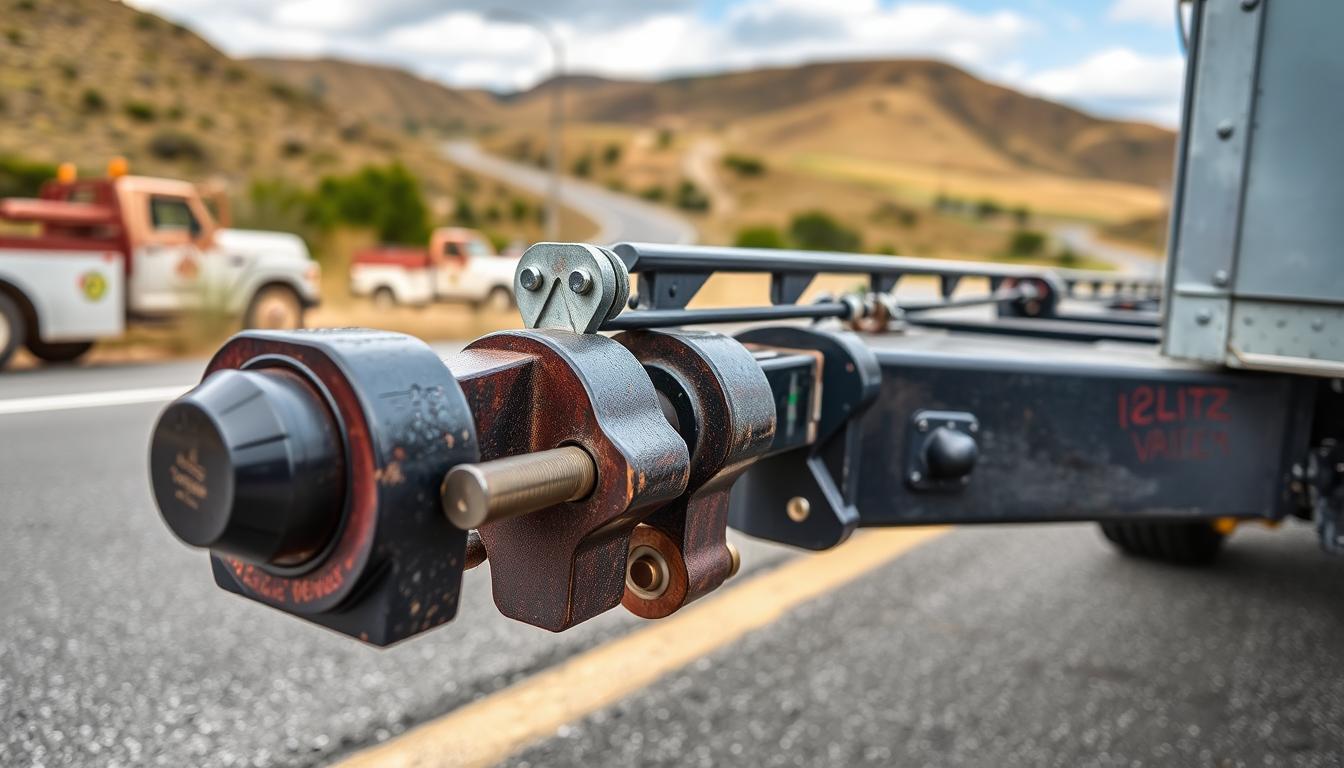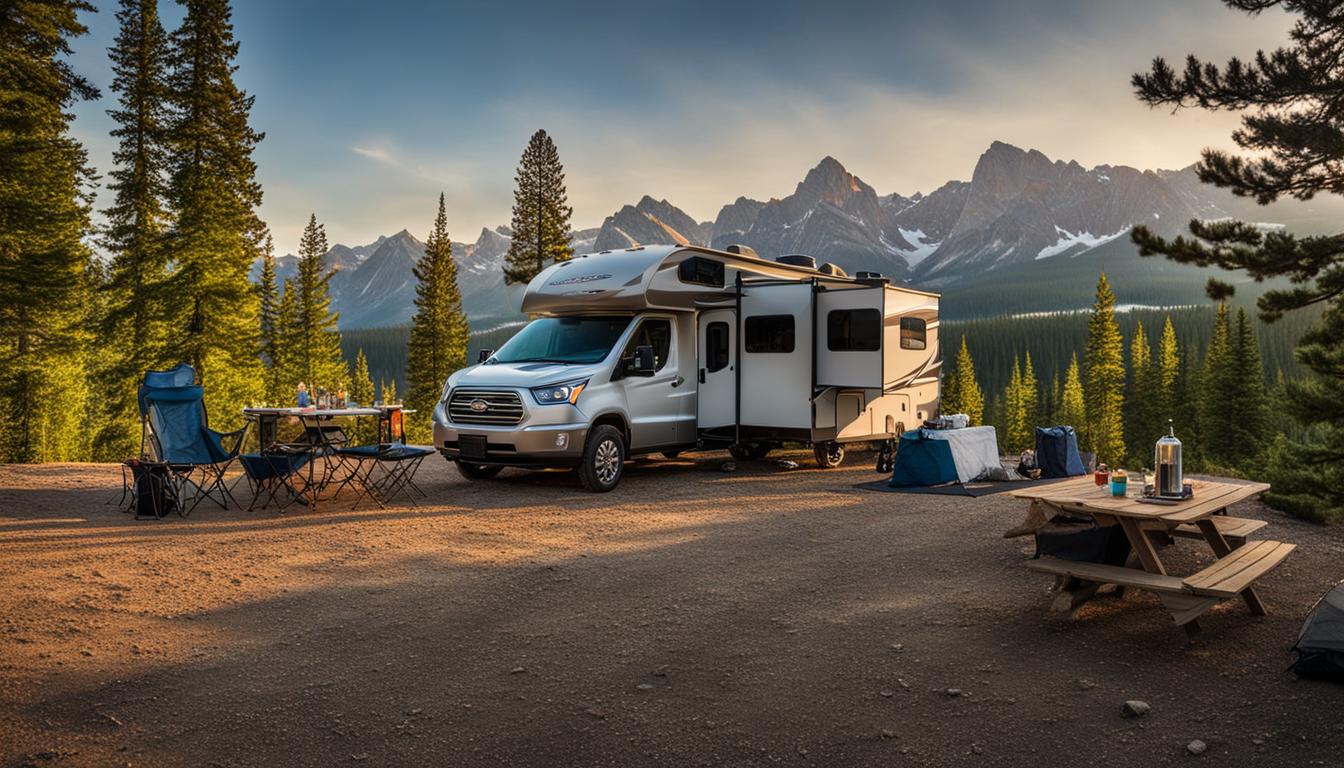As the crisp air of fall gives way to the chill of winter, many campers start to ponder the fate of their beloved RVs. To ensure that your camper remains in pristine condition during the cold months, it’s essential to take the time to winterize it properly. Not only does this process protect your investment from damage caused by freezing temperatures, but it also sets the stage for a smoother transition when spring arrives. In this ultimate guide, we will walk you through the step-by-step tips to winterize your camper effectively, so you can enjoy peace of mind knowing your home-on-wheels is safe and sound until warmer days return. Let’s dive into the essential tasks that will help you winterize your camper and keep it ready for the adventures that await in the new season!
Why Winterizing Your Camper is Essential Before Cold Weather Hits
As the leaves begin to change and the crispness of winter approaches, it’s time to think about winterizing your camper. Properly winterizing your camper is essential to protect it from the harsh effects of cold weather. Failing to do so can lead to serious damage that may require extensive repairs, ultimately impacting your ability to enjoy those summer road trips the following year. Taking the time to prep your vehicle before the freezing temperature sets in will not only extend its lifespan but also ensure that it’s ready to hit the road again when warmer days return.
One of the primary reasons to winterize your camper is to prevent water freeze damage. Water left inside the pipes, tanks, and lines can freeze, expand, and cause cracks or ruptures that can lead to costly repairs. By properly draining and flushing your water system, then adding antifreeze, you’re taking a crucial step in protecting these vital components. Additionally, ensuring that your camper’s exterior is sealed can guard against moisture intrusion that can lead to mold and rot, which are particularly detrimental in winter months when the camper is often shut up tight.
Another important aspect of winterizing your camper is safeguarding the interior. Start by removing any perishable items and thoroughly cleaning the space to prevent pest infestations during the off-season. Using moisture absorbers can combat humidity, and covering furniture can help keep everything in good shape. Moreover, checking the roof and seals for potential leaks can save you from discovering leaks come spring, ensuring that the interior remains dry and ready for your next adventure.
Finally, winterizing your camper isn’t just about protecting your investment; it’s about preserving the joy of outdoor adventures for the years to come. When you take the necessary steps to winterize your camper properly, you’re investing in countless future road trips and memories with friends and family. So, before the cold weather hits, make sure to set aside some time to carefully winterize your camper, ensuring that you’re prepared for whatever Mother Nature throws your way.
Inspecting Your Camper for Vulnerabilities: Key Preparation Steps
As the colder months approach, it’s crucial to take proactive steps in preparing your camper for winter. One of the essential tasks is to thoroughly inspect your camper for any vulnerabilities that could lead to damage during this harsh season. By identifying and addressing potential issues now, you can ensure that your camper remains in good condition, ready for the adventures awaiting you when warmer weather returns. Start by checking all seals and weatherstripping around windows and doors, as worn-out materials can allow moisture to seep in, leading to mold and structural damage.
Another key aspect of preparing your camper for winter is to winterize your camper’s plumbing system. This involves flushing the fresh water system, draining tanks, and adding antifreeze to prevent any remaining water from freezing and expanding, which can cause pipes to crack or burst. Don’t forget to check for leaks and perform maintenance on your water heater, as neglecting these components can lead to costly repairs down the line. Taking the time to address plumbing concerns now will save you time and money when you’re ready to hit the road again.
Inspecting the exterior of your camper is equally important. Look for any signs of damage on the roof, such as cracks or missing sealant, which can compromise the integrity of your camper and allow moisture to enter. It’s also wise to check the tires for wear and maintain proper inflation to ensure safe travel when the time comes. Additionally, cleaning the exterior and applying a protective wax can help prevent rust and deterioration caused by road salt and harsh winter weather.
Lastly, don’t overlook the interior. Ensure that all appliances are functioning properly and that there’s no moisture buildup, which could encourage mold growth. Store any items that could freeze, such as food or electronics, in a safe location. By following these key preparation steps and taking the time to winterize your camper, you can help preserve its condition and extend its lifespan, making your return to outdoor adventures even more enjoyable.
Top 10 Supplies You Need to Winterize Your Camper Effectively
As the temperatures begin to drop and the leaves change colors, it’s time to think about how to winterize your camper effectively. Proper preparation can save you from costly repairs and ensure that your beloved camper is ready for a summer adventure when the time arrives. To make your winterization process seamless, having the right supplies on hand is essential.
First and foremost, your winterization toolkit should include antifreeze specifically formulated for RVs. This type of antifreeze is non-toxic and designed to protect your plumbing system from freezing temperatures. Ensure that you have enough to flush through all pipes and drains, as any remaining water can lead to serious damage. Additionally, a water pump converter kit can make the process easier by allowing you to introduce antifreeze into your system without hassle.
Next, don’t overlook the importance of cleaning supplies. A high-quality cleaner will help you scrub surfaces and remove any lingering food particles or moisture that could foster mold and mildew during the winter months. Along with the cleaner, investing in desiccants or moisture-absorbing packets can help keep dampness at bay and minimize the risk of damage caused by humidity inside your camper. Also, be sure to pack away your camper’s battery and store it in a cool, dry place—along with a battery maintainer to ensure it stays charged through the winter off-season.
Finally, a good set of covers for your camper can provide essential protection against the elements. Your supplies list should include tire covers to protect against UV damage and weather deterioration, as well as an all-weather cover for the camper itself. These covers will shield your vehicle from snow, ice, and moisture, ensuring that your investment stays in tip-top shape until it’s time to hit the roads again. By gathering these supplies and following the right steps, you’ll be well-equipped to winterize your camper efficiently and keep it safe during the colder months.
How to Drain and Flush Your Camper’s Water System for Winter
As winter approaches, it’s essential for camper owners to take the necessary steps to protect their water systems from freezing temperatures. One of the most effective ways to achieve this is by properly draining and flushing your camper’s water system. Winterizing your camper not only prevents costly repairs but also ensures a smooth transition into the camping season when spring rolls around. By following a systematic approach, you can effectively prepare your vehicle for the colder months.
Start by gathering your supplies, which include a water pump antifreeze specifically designed for RVs, a garden hose, and some towels. First, turn off all the water sources in your camper, such as the water pump and any water heaters. Make sure to drain the fresh water tank completely and flush it with fresh water to remove any lingering contaminants. Next, disconnect the water supply lines and leave them open to allow residual water to exit. Don’t forget to drain the gray and black water tanks as well, as any remaining water can lead to unpleasant odors and potential plumbing issues.
Once the major tanks are drained, it’s time to flush the system. Connect a garden hose to the city water inlet and run water through the system for a few minutes, ensuring that all faucets and the shower are opened. This will help dislodge any remaining debris or biofilm. After flushing, turn on the water pump briefly to help remove any last bits of water trapped in the plumbing, and then leave all the faucets open. Finally, introduce RV antifreeze into the water lines by carefully pouring it into the fresh water tank or using a hand pump to push it through the system. Make sure each faucet runs until the pink antifreeze flows out, providing further protection against freezing.
Winterizing your camper properly can save you time and money in the long run, so it’s worth taking the time to do it right. By draining and flushing your water system, and adding antifreeze, you ensure that your camper will be ready for action once the temperatures warm up. With these simple steps, you can rest easy knowing that your water system is protected against the harsh winter conditions.
Protecting Your Camper’s Exterior from Snow and Ice Damage
As winter approaches, the importance of protecting your camper’s exterior from snow and ice damage becomes paramount. Many camper owners underestimate the impact of cold weather on their vehicles, resulting in costly repairs come spring. To avoid this, it’s essential to winterize your camper properly. This process involves not just preparing the interior for the frosty months ahead, but also fortifying the exterior against the harsh elements that can compromise its integrity.
The first step in safeguarding your camper is to thoroughly clean its exterior. Wash away any dirt, grime, or debris that may have accumulated, as these can trap moisture and lead to mold or corrosion. Following the wash, apply a high-quality wax to create a protective barrier against snow and ice. This wax acts as a shield, helping to repel water and prevent the formation of ice on the surface. Be sure to pay attention to seals and joints, as these areas are particularly vulnerable to leaks when frozen.
Another crucial aspect of winterizing your camper involves addressing its roof. Snow accumulation can add significant weight, and if leaks form due to damaged or degraded roofing materials, the consequences can be severe. Inspect the roof regularly and repair any cracks or soft spots. Moreover, consider adding a protective cover that can help prevent ice and snow buildup, ultimately preserving the camper’s exterior finishes and structure.
Lastly, don’t forget to check the camper’s undercarriage and wheel wells, as these areas are often overlooked. Salt and other chemicals used for de-icing roads can cause severe damage if left unchecked. Applying a protective coating or sealant can minimize corrosion risks. By taking these proactive steps to winterize your camper and protect its exterior, you can ensure your investment remains in top shape, ready for your next adventure when warmer days return.
Winter Storage Solutions: Where to Park Your Camper During the Cold Months
As winter approaches and temperatures drop, it’s essential to consider where to park your camper during the cold months. Proper winter storage solutions can help protect your vehicle from harsh weather conditions, prevent potential damage, and ensure it’s ready for adventure when spring arrives. A well-thought-out plan for storing your camper can save you from costly repairs and maintenance issues associated with ice, snow, and freezing temperatures.
One popular option for winter camper storage is to rent space at a specialized facility. Many RV storage facilities offer covered or indoor options that provide a protective environment against the elements. These places often have security measures in place, giving you peace of mind that your investment is safe. Alternatively, if you have adequate space in your driveway or backyard, you could park your camper at home. However, it’s crucial to winterize your camper by flushing the water system, adding antifreeze, and securing all openings to prevent critters from making it their winter hideout.
Another viable storage option is to seek out a local camper or RV community. Some parks and campgrounds offer winter storage services for their members, making it a convenient choice if you’re already part of such a community. Additionally, asking fellow campers for their storage recommendations can lead you to hidden gems that provide the best care for your vehicle. Regardless of where you choose to store your camper, remember that adequate winterization will prolong its lifespan and keep it in excellent working order for your next road trip.
Lastly, if you opt for outside storage, consider using a high-quality cover specifically designed for winter conditions. Protecting your camper with a good cover can help shield it from UV rays, snow accumulation, and ice build-up, significantly reducing the risk of winter-related damage. Taking these steps not only prepares your vehicle for the colder months but also sets you up for a seamless transition back to camping when the warmer weather returns.
Don’t Forget the Essentials: Tips for Winterizing Your Camper’s Appliances
As the colder months approach, it’s time to think about how to winterize your camper and protect its appliances from freezing temperatures. Without proper preparation, you risk damage to your plumbing and appliances, which can result in costly repairs or replacements when the camping season resumes. Whether your camper is parked at a seasonal campsite or stored in your driveway, taking the time to ensure everything is correctly winterized will save you headaches come spring.
Start by draining the water system thoroughly. This includes emptying the fresh water tank, the grey and black tanks, as well as the water heater. To do this, open all faucets and let the water drain completely, ensuring no residual water remains that could freeze. After draining, consider adding non-toxic RV antifreeze to the plumbing system. This will help protect your pipes and fixtures from freezing and cracking during the cold snap. Additionally, be sure to flush the toilet and pour a bit of antifreeze down the sink and shower drains to protect those areas as well.
Next, focus on your camper’s appliances, especially those relying on gas or electricity. Turn off the gas supply to your fridge, stove, and heater, and clean these appliances thoroughly before winterization. If you have a refrigerator, it’s wise to leave the door ajar to prevent mold and unpleasant odors from developing. For electric appliances, unplug them to prevent any potential electrical issues caused by exposure to cold. Lastly, a thorough inspection of the vents and exterior covers should not be overlooked, as rodents and debris can easily find their way into these areas during the off-season.
Winterizing your camper can feel like a daunting task, but with a methodical approach, it becomes manageable and crucial for the longevity of your equipment. Taking the time to winterize your camper now will ensure your appliances are safe and functioning well when it’s time to hit the road again. Keeping your camper in top shape not only enhances your camping experience but also allows you to enjoy those cherished moments in the great outdoors, worry-free, as soon as the warmer days return.
Final Checks and Maintenance Before Winter Hits: Checklist for Camper Owners
As the days grow shorter and the air turns crisp, camper owners must turn their attention to preparing for the winter months ahead. Winterizing a camper is not just about preventing frozen pipes; it’s an essential process to ensure your vehicle remains in peak condition until it’s ready to hit the road again in the spring. A detailed checklist can serve as a vital guide for these final checks and maintenance tasks.
Begin by inspecting the exterior of your camper for any signs of wear and tear. Check seals, seams, and caulking around windows and doors to ensure there are no gaps where moisture could enter. It’s important to clean the roof and any other surfaces to prevent mold and mildew during the colder months. Moreover, address any necessary repairs before winter sets in, as freezing temperatures can exacerbate existing issues.
Next, focus on the plumbing system, which is often the most vulnerable part of any camper during winter. To winterize your camper, start by draining the freshwater tank, water lines, and holding tanks thoroughly. After that, add a non-toxic antifreeze solution to the plumbing system to prevent any remaining water from freezing. Don’t forget to check your water heater and any appliances that could be affected by the cold. A rigorous maintenance check will protect your investment and ensure your camper is ready for future adventures.
Finally, consider storing your camper properly to shield it from winter elements. If possible, park it in a garage or use a high-quality cover designed specifically for camper protection. It’s also a good idea to remove any perishables and clean the interior thoroughly to prevent unwanted pests. By following this winterization checklist, you can rest easy knowing that your camper is well-prepared to weather the winter and is ready for a smooth revival come spring.
Expert Tips for Winterizing Your Camper Like a Pro
As the temperatures drop and the days get shorter, it’s time to shift your focus from summer adventures to preparing your camper for the winter season. Winterizing your camper is an essential task that prevents damage and ensures it’s ready to hit the road when spring arrives. To winterize your camper like a pro, follow these expert tips that will help protect your investment and make your spring preparation seamless.
Start by thoroughly cleaning your camper inside and out. Remove all food items, clean the appliances, and vacuum the interior to prevent any unwanted pests from making your camper their winter home. Pay attention to all nooks and crannies, as they can harbor crumbs and other debris. Once the interior is spotless, drain the water systems, including your fresh water and wastewater tanks. This step is crucial, as any remaining water can freeze, expand, and potentially crack pipes or tanks.
Next, consider the exterior of your camper. Inspect seals and caulking around windows, doors, and roof seams to identify any leaks. Applying new sealant where necessary will help safeguard against harsh winter weather. Don’t forget to protect your tires; keeping your camper off the ground with jack stands will prevent flat spots, and covering the tires can shield them from UV rays and severe temperature fluctuations. Finally, for added protection, consider using a breathable cover that shields against snow and ice while allowing moisture to escape.
Before you call it a day, take a moment to check the battery and propane system. Remove the battery and store it in a warm place to prevent freezing, and check the propane tank for leaks. Make sure to keep your camper in a dry location, ideally indoors, to further protect it from the elements. By carefully following these tips to winterize your camper, you can rest easy knowing your vehicle is safe and sound, ready for more adventures when the warmer months return.



